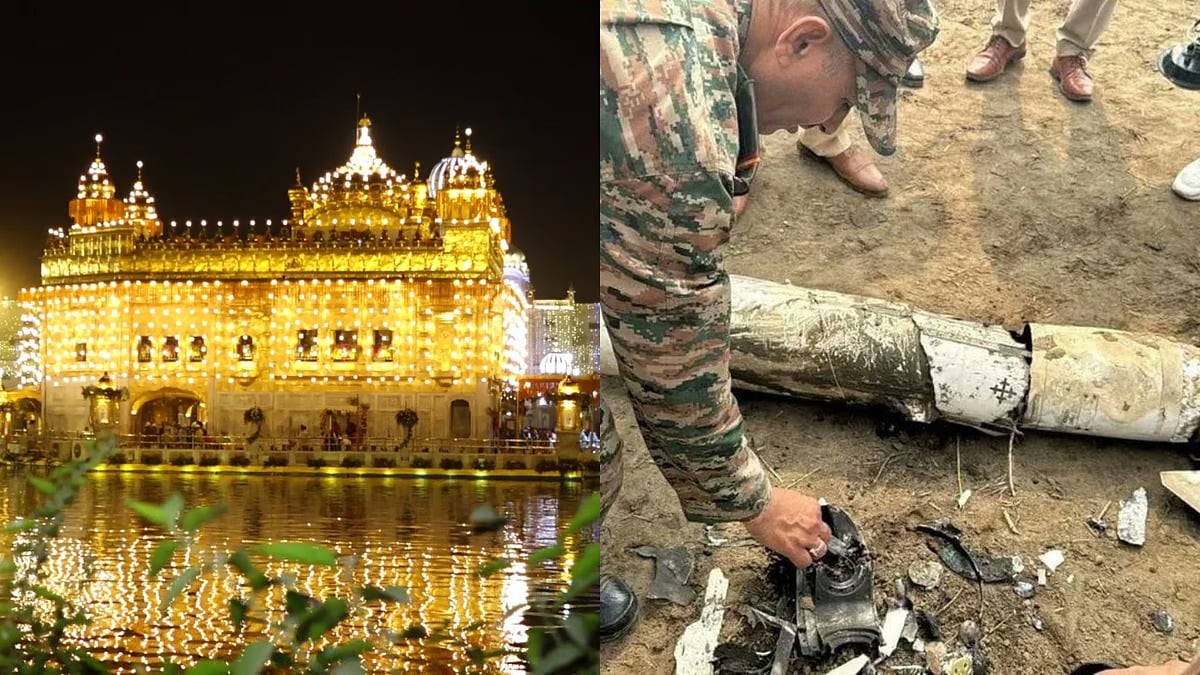In a stunning demonstration of military preparedness and resolve, Indian Air Defence forces successfully thwarted a large-scale Pakistani aerial assault on the Golden Temple and multiple civilian areas in Punjab on May 8. The high-stakes interception, involving the deployment of DRDO-developed AKASH missile systems and Swedish-origin L-70 Air Defence Guns, ensured the complete protection of one of India’s most revered religious sites from incoming drones and missiles.
The attack was part of Pakistan’s retaliation following Operation Sindoor, an Indian military operation conducted in response to the Pahalgam terror attack on April 22, in which 26 civilians, including a Nepalese national, were killed by Lashkar-e-Taiba terrorists. India’s counteroffensive struck nine major terror camps across Pakistan and Pakistan-occupied Jammu and Kashmir (PoJK), including high-value targets such as the Lashkar-e-Taiba HQ in Muridke and Jaish-e-Mohammed’s base in Bahawalpur. Indian authorities clarified that no Pakistani civilian or military infrastructure was targeted during the operation.
Pakistan’s retaliatory strike, however, aimed directly at cultural and civilian targets, including the Golden Temple in Amritsar, a UNESCO World Heritage Site and a globally recognized symbol of peace and faith. According to Major General Kartik C Seshadri, General Officer Commanding of the 15 Infantry Division, India had anticipated such an attack. “Based on actionable intelligence, we reinforced air defence assets to create a protective dome over key sites, especially the Golden Temple,” he said.
In the pre-dawn hours of May 8, Indian radar systems detected multiple incoming threats. Within seconds, highly trained Air Defence units launched interceptors, neutralizing all hostile drones and missiles mid-air. The response was swift, precise, and decisive—preventing any damage or casualties. “Our personnel’s alertness and commitment ensured that not even a scratch touched the holy shrine,” Major General Seshadri emphasized.
The AKASH missile system, a key component of the response, is capable of engaging targets up to 45 km away, including fighter aircraft, cruise missiles, and UAVs. The enhanced Akash-NG (Next Generation) variant, with a range of 70–80 km and superior reaction time, further strengthened India’s air defence net. These systems, along with upgraded L-70 anti-aircraft guns, were instrumental in repelling the assault.
The Pakistani offensive followed heightened cross-border hostilities, including mortar shelling in Rajouri, Poonch, Kupwara, and Baramulla, which resulted in 13 fatalities. At a high-level security meeting, Union Home Minister Amit Shah reiterated the government’s uncompromising stance on national security. “Operation Sindoor is a clear message: any attack on our people will receive a forceful and proportional response,” Shah stated.
This incident reaffirms the strategic importance of air defence systems in contemporary warfare—not just for battlefield supremacy, but for the protection of cultural and religious heritage. The successful defence of the Golden Temple stands as a testament to India’s technological readiness, intelligence coordination, and commitment to safeguarding its people and monuments in times of crisis.













